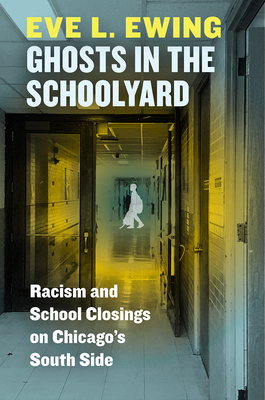Ghosts in the Schoolyard: Racism and School Closings on Chicago's South Side
Eve L. Ewing

Although it’s less of a fun read than “Electric Arches” (or Ironheart #1!), “Ghosts in the Schoolyard” is a worthwhile read. This book grew out of Ewing’s PhD dissertation, and I think it strikes a good balance between rigor and accessibility. The focus, as the subtitle suggests, is on a series of school closings by Chicago Public Schools (CPS) a few years ago.
Along with the contemporaneous debate over the school closures, Ewing documents the history of de jure segregation and public disinvestment in black communities that led to the proposed school closings. Much of the focus of the narrative is on the competing analytical lenses used by the two key opposing parties: CPS and community members who spoke out against the school closures. The historical perspective really adds power to this framing–it’s not simply “CPS with data vs. community members with feelings,” but rather (or also), CPS taking an ahistorical perspective (ignoring the role of itself and other city organizations in bringing about the situation it was trying to resolve) vs. community members trying to hold it to account with that history.
I learned a few specific interesting things from the book, as well as from Ewing’s November 2018 talk at the Strand bookstore. First, the book notes how public housing projects in Chicago gave preference to families with lots of children when they were constructed. This led to an extreme concentration of children in the neighborhood, but also to a “demographic bulge” that was virtually certain not to be sustained and would foreseeably lead to underutilization of school buildings in the future. Second, I appreciated Ewing’s discussion of how institutions (such as schools) can have more significance for poor and disadvantaged people than they do for more privileged people (the latter of whom have the resources to make adjustments without much difficulty). I think a common response of more privileged people (such as myself) to stories of school closures and the like is to feel like it’s not that big of a deal–because for us, it wouldn’t be. Ewing does a good job of encouraging a little more perspective-taking. Finally, in the book talk, an audience member asked Ewing what impact the school closures (which mostly targeted heavily African American schools) had on the overall demographics of CPS. I initially thought this was a silly question, because I assumed the answer was that there was no impact in aggregate, with the same students shuffled to different schools. But I was wrong about this apparently; Ewing says that African American enrollment in CPS declined as many families ended up moving out of the city. In light of this book, it’s hard not to see this as, if not an intended consequence per se, at least foreseeable one–and an echo of mid-late-20th-century “urban renewal” projects.
I have read several books this year, this one among them, that reinforce the lesson of how important a resource history is for liberatory and justice-oriented movements; and conversely, how overlooking or erasing history serves the status quo. So I’m increasingly appreciative of authors who, such as Ewing, work to keep important pieces of history from being disappeared.